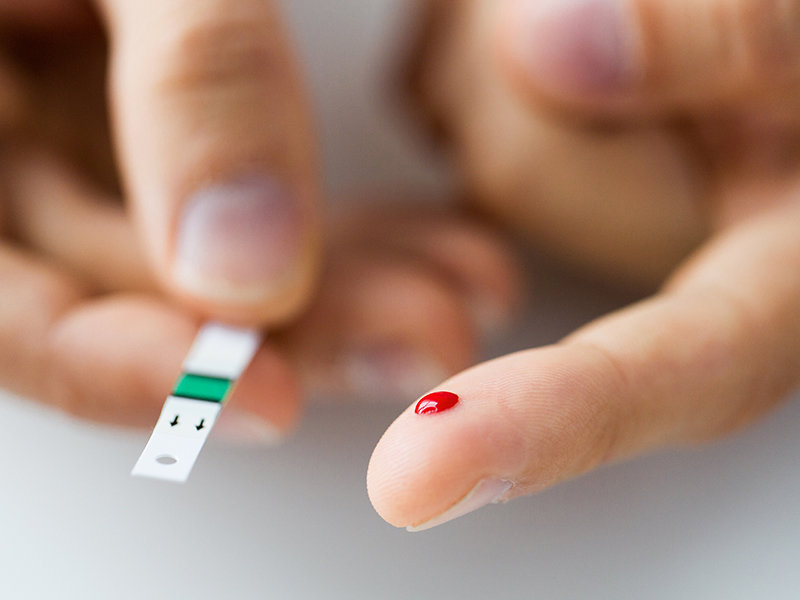Diabetes accounts for 9% of health sector’s total costs

TEHRAN – Diabetes is responsible for some 9 percent of the total costs spent in the country’s health sector, deputy director for the Non-Communicable Diseases (NCDs) Committee has said.
Regarding the prevalence of overweight and diabetes among Iranians, the committee has drawn up a program containing strategies to prevent NCDs in the country, IRNA quoted Mohammad Baqer Larijani as saying on Saturday.
Heading by Health Minister Hassan Qazizadeh Hashemi, the National Non-Communicable Disease Committee was established in 2015. There are six subcommittees affiliated with this committee responsible for controlling cancer, cardiovascular diseases, metabolic disorders, air pollution and inter-sectoral collaboration, traffic injuries, and a subcommittee for monitoring and evaluating whole action plan for the NCDs in Iran.
According to the World Health Organization the number of people with diabetes has risen from 108 million in 1980 to 422 million in 2014. The global prevalence of diabetes among adults over 18 years of age has risen from 4.7% in 1980 to 8.5% in 2014. In 2015, diabetes was the direct cause of 1.6 million deaths and in 2012 high blood glucose was the cause of another 2.2 million deaths. Diabetes prevalence has been rising more rapidly in middle- and low-income countries.The national plan to combat NCDs was endorsed by President Hassan Rouhani, Parliament Speaker Ali Larijani, the then Director-General of WHO Margaret Chan Fung Fu-Chun and WHO Regional Director for the Eastern Mediterranean Ala Alwan, which was also appreciated by other countries due to not being limited to one ministry and sector but to other sectors as well.
Controlling diabetes and obesity is one of the goals of the plan, which is being pursued in a diabetes special working group, Larijani said Saturday, adding, the group is planning special programs to control diabetes and its complications nationwide.
Pointing to the National Service Framework for Diabetes which is prepared by the group, he noted that planning for general and specialized diabetes training courses, setting up a diabetes registration system, and pursuing the establishment of more diabetes clinics are among programs that have been implemented by the working group.
He went on to say that the National Service Framework for Diabetes aims at preventing the spread of the disease, providing appropriate services to affected people and prevent the complications of the disease.
Larijani stated that the establishment of diabetes clinics can provide patients with appropriate services and control the disease, adding, launching the diabetes registration system and expanding diabetes clinics are the two important programs underway by the working group in cooperation with the relevant deputies at the Ministry of Health.
Moreover, studies in national scale on non-communicable diseases, including diabetes, are being conducted nationwide, he added.
Launching specialized clinics for diabetes in the country can play a significant role in controlling the diseases, he highlighted, adding that supervision, registration, insurance coverage, high quality care services, treatment and combating the increasing prevalence of diabetes are the goals of these clinics, he concluded.
In April, Deputy Health Minister Mohammad-Hadi Ayyazi said that some five million Iranians suffer from diabetes.
According to the World Health Organization the number of people with diabetes has risen from 108 million in 1980 to 422 million in 2014. The global prevalence of diabetes among adults over 18 years of age has risen from 4.7% in 1980 to 8.5% in 2014. In 2015, diabetes was the direct cause of 1.6 million deaths and in 2012 high blood glucose was the cause of another 2.2 million deaths. Diabetes prevalence has been rising more rapidly in middle- and low-income countries.
Diabetes: symptoms, damages
Symptoms of Type 1 diabetes include excessive excretion of urine (polyuria), thirst (polydipsia), constant hunger, weight loss, vision changes, and fatigue. These symptoms may occur suddenly, but symptoms of Type 2 are often less marked. As a result, the disease may be diagnosed several years after onset, once complications have already arisen.
Over time, diabetes can damage the heart, blood vessels, eyes, kidneys, and nerves.
Diabetic retinopathy is an important cause of blindness, and occurs as a result of long-term accumulated damage to the small blood vessels in the retina. 2.6% of global blindness can be attributed to diabetes.
FB/MG
Leave a Comment